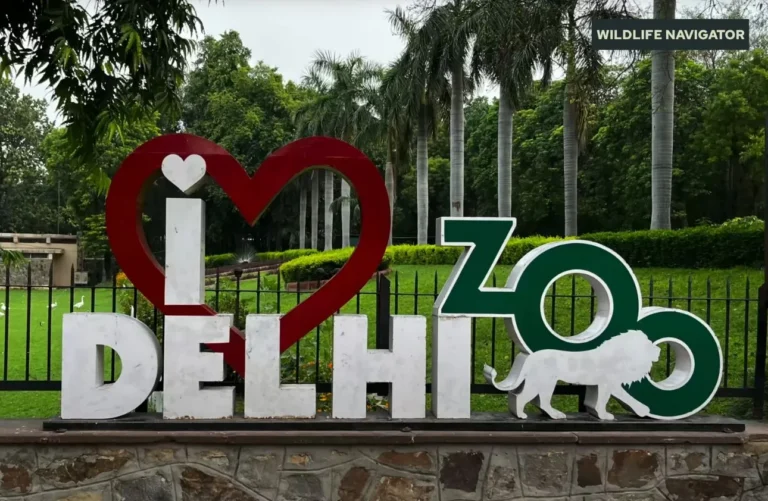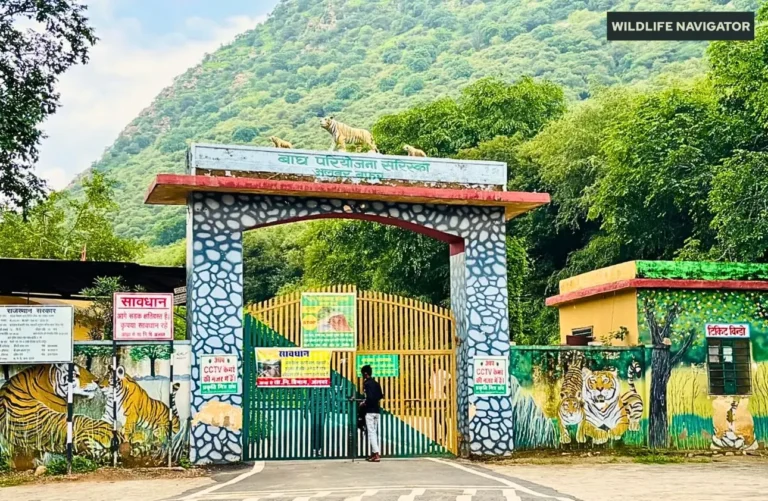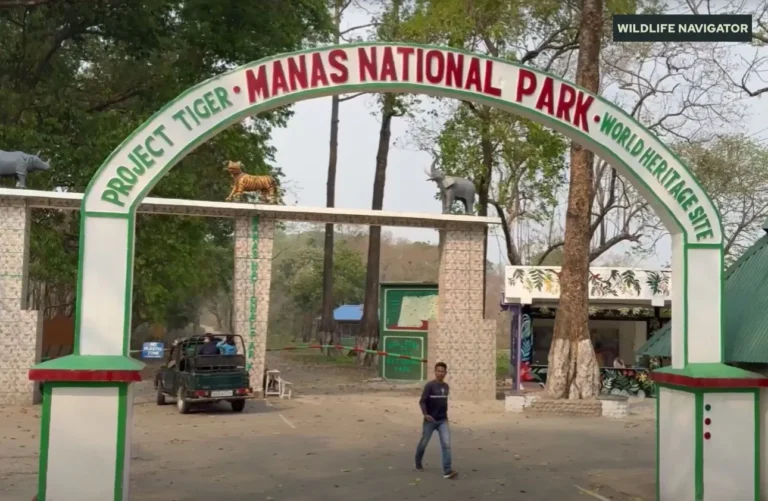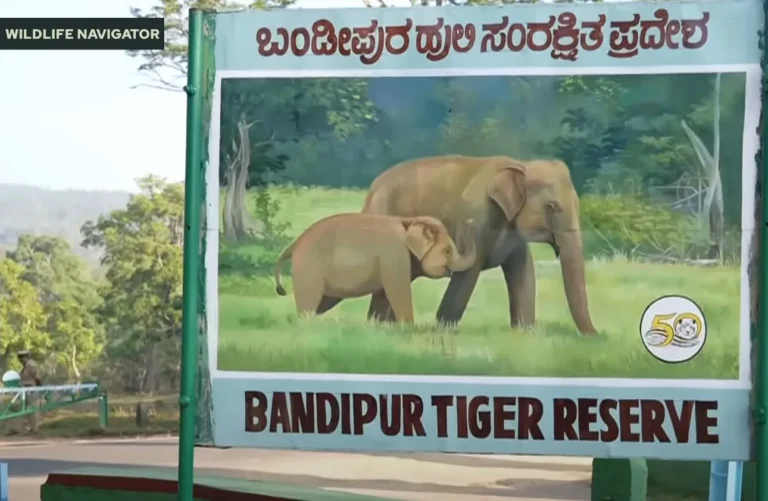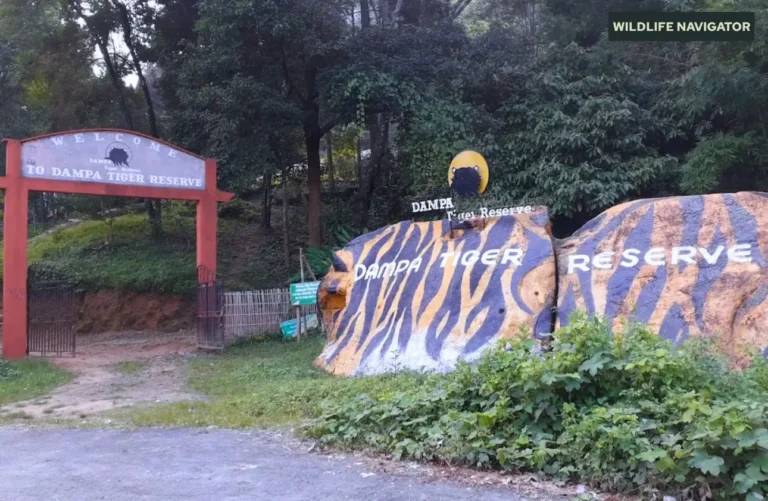Nameri National Park & Tiger Reserve – Complete Travel & Wildlife Guide

Nameri National Park is one of Assam’s most enchanting wildlife destinations. Known for its pristine forests, crystal-clear rivers, and incredible biodiversity, Nameri is not only a National Park but also a Tiger Reserve under Project Tiger. Established as a National Park in 1998 and declared a Tiger Reserve in 1999, Nameri covers an area of over 200 square kilometres and forms a vital part of the tiger and elephant corridor between Assam and Arunachal Pradesh.
What makes Nameri unique is its striking combination of wilderness and adventure. Unlike some heavily commercialised parks, Nameri remains relatively untouched, offering a raw and intimate experience with nature. Visitors can explore dense evergreen forests, raft along the Jia Bhoroli River, and trek through buffer areas while spotting elephants, exotic birds, and the elusive tiger.
For birdwatchers, Nameri is nothing short of paradise, with over 370 recorded species, including the globally threatened white-winged wood duck and several species of hornbills. Anglers also know Nameri for the golden mahseer, a rare game fish found in its rivers.
In essence, Nameri National Park is more than just a wildlife sanctuary—it is an ecosystem where forests, rivers, and wildlife thrive in harmony. Whether you’re a nature enthusiast, an adventure seeker, or someone looking for a peaceful retreat into the wilderness, Nameri offers an unforgettable experience far away from the usual tourist trails of Assam.
History, Geography & Landscape
History & Establishment
Nameri’s story begins long before it was declared a protected area. Originally a Reserved Forest, the region was recognised for its ecological importance due to its rich biodiversity and strategic location along the foothills of the Himalayas. In 1985, it was first declared a sanctuary to protect its fragile ecosystems, particularly elephants and rare bird species. Later, in 1998, it was officially upgraded to the status of a National Park.
The following year, in 1999, Nameri was brought under Project Tiger and declared a Tiger Reserve, cementing its importance in India’s tiger conservation program. Today, Nameri is managed as part of the broader Nameri Tiger Reserve, which includes both the core park and its buffer zones, ensuring protection for wide-ranging species like tigers and elephants.
Geographical Location
Nameri lies in the Sonitpur district of Assam, sharing its northern boundary with Pakke Tiger Reserve in Arunachal Pradesh. This strategic location makes it a part of an important transboundary wildlife corridor used by tigers, elephants, and other large mammals. The park spreads over 200 square kilometres, making it smaller compared to giants like Kaziranga, but its compactness allows for concentrated biodiversity in a relatively small space.
Landscape & Ecosystem
The park is a mosaic of tropical evergreen forests, riverine grasslands, bamboo thickets, and open woodlands. Its terrain is gently undulating, with rivers and streams crisscrossing through dense greenery. The lifeline of the park is the Jia Bhoroli River, a tributary of the mighty Brahmaputra, which flows along its western boundary. This river is not only vital for wildlife but also supports recreational activities like rafting and fishing.
Nameri falls within the Eastern Himalayan biodiversity hotspot, one of the richest zones of flora and fauna in the world. Its location at the Himalayan foothills also gives it a unique character, blending tropical lowland species with montane biodiversity.
Flora & Fauna of Nameri
Flora: A Green Paradise
Nameri National Park is a lush haven of tropical and subtropical evergreen forests, interspersed with riverine grasslands and open woodlands. Its rich and fertile landscape supports a wide variety of plant species, making it ecologically significant. The park’s dense canopy provides shelter and sustenance for numerous wildlife species.
- Hardwood Trees: Sal, Teak, and Hollong
- Bamboo & Cane Thickets: Dense groves that cover large sections of the park
- Medicinal & Endemic Plants: Various herbs used by locals and wildlife
- Wildflowers: Bloom season adds bursts of colour to the forest floor
The semi-evergreen forests serve as ideal habitats for elephants, tigers, and deer. Meanwhile, the Jia Bhoroli River grasslands act as grazing grounds for herbivores and hunting areas for predators, creating a dynamic and balanced ecosystem.
Fauna: Wildlife Richness of Nameri
Nameri is home to an impressive range of wildlife. Though spotting a tiger is rare due to the dense forests and shy nature of the animal, the park plays a vital role in their conservation as part of the Nameri Tiger Reserve.
- Mammals: Key species include Asian elephants, leopards, Himalayan black bears, wild boars, barking deer, sambars, and gaurs. Tigers are present but elusive, while clouded leopards have also been recorded.
- Birdlife: Nameri is a birdwatcher’s paradise with over 370 recorded bird species. The most iconic is the endangered white-winged wood duck, often regarded as the star attraction for birders. Other notable species include hornbills, Ibisbill, wreathed hornbill, great pied hornbill, and the colourful Asian paradise flycatcher.
- Reptiles & Aquatic Life: The park also shelters reptiles like the king cobra and pythons, along with several freshwater turtles. The Jia Bhoroli River is famous for the golden mahseer, a prized game fish, which attracts anglers from across the world (catch-and-release is encouraged for conservation).
A Biodiversity Hotspot
Being part of the Eastern Himalayan biodiversity hotspot, Nameri combines species from both tropical plains and Himalayan foothills. This overlap makes it especially rich in diversity compared to many other Indian parks. From elusive big cats to fragile bird species, Nameri’s flora and fauna reflect its status as one of India’s most valuable ecosystems.
Nameri Tiger Reserve
Establishment & Project Tiger
In 1999, a year after Nameri was declared a National Park, it was included under Project Tiger and notified as the Nameri Tiger Reserve. This was a landmark step, as the area formed a vital habitat for tigers and elephants moving between Assam and Arunachal Pradesh. Managed as part of the larger Sonitpur Elephant Reserve, Nameri’s tiger reserve status helps secure both predator and prey species, as well as the critical forest corridors connecting neighbouring reserves.
Part of a Larger Conservation Landscape
Nameri Tiger Reserve does not exist in isolation. It is part of a greater protected landscape that includes the Pakke Tiger Reserve in Arunachal Pradesh and the famous Kaziranga National Park in Assam. This connected wilderness creates a transboundary corridor essential for tiger survival, genetic exchange, and the movement of elephants, gaur, and other large mammals. Without such corridors, isolated populations of tigers would struggle to survive in the long term.
Tiger Population & Challenges
While tigers are present in Nameri, sightings are extremely rare. The dense vegetation, coupled with a relatively small population, makes them elusive. Camera trap studies have confirmed their existence, but Nameri is better known as an elephant habitat and a refuge for rare birds. Poaching, human-wildlife conflict, and encroachment remain challenges, though consistent monitoring and patrols have helped reduce threats over the years.
Conservation Significance
The value of Nameri Tiger Reserve goes beyond tiger numbers. Its status ensures increased protection, funding, and research, not just for tigers but for the entire ecosystem. From the endangered white-winged wood duck to the prized golden mahseer, a wide range of species benefit from tiger reserve-level conservation.
Nameri also serves as an ecotourism hub, where controlled activities like rafting, trekking, and birdwatching foster awareness and generate local livelihoods. By linking conservation with community benefits, the Tiger Reserve model here is a step toward sustainable protection.
Activities & Things to Do in Nameri
1. River Rafting on the Jia Bhoroli
One of the highlights of visiting Nameri is a gentle rafting experience on the crystal-clear waters of the Jia Bhoroli River. Unlike adrenaline-pumping rapids, rafting here is calm and scenic, allowing visitors to float through pristine forests and watch wildlife along the riverbanks. It’s common to spot migratory birds, river fish, and even elephants coming down to the river for a drink. This activity is perfect for families, photographers, and birdwatchers who want to experience Nameri from a unique perspective.
2. Birdwatching Paradise
Nameri is often called a birder’s dream, with more than 370 recorded species. Early morning birding walks are particularly rewarding, as you may encounter rare species such as the endangered white-winged wood duck, four types of hornbills, and the vibrant Asian paradise flycatcher. The park’s location at the Himalayan foothills makes it a haven for both resident and migratory birds, making it one of the best birding destinations in Northeast India.
3. Nature Walks & Trekking
Unlike many tiger reserves in India, where walking inside the forest is restricted, Nameri offers the rare chance to explore its wilderness on foot. Guided nature walks in buffer areas and along forest trails let visitors get up close with the park’s flora and fauna. These treks are often accompanied by trained forest guards, ensuring safety while giving you the thrill of being immersed in raw nature.
4. Angling for Golden Mahseer
The golden mahseer, often called the “tiger of the river,” is found in the Jia Bhoroli. Nameri allows catch-and-release angling, which attracts fishing enthusiasts from across the world. While conservation rules prohibit keeping the catch, the sheer experience of battling with this powerful fish in a Himalayan river is unforgettable.
5. Eco-Camping & Community Experiences
Around the park, several eco-camps and lodges provide rustic stays close to nature. Many of these are managed in partnership with local communities, offering travellers a chance to learn about Assamese culture, food, and traditions while directly supporting conservation-friendly livelihoods.
Best Time to Visit Nameri
Winter (November to February) – The Ideal Season
The winter months are the best time to visit Nameri National Park. From November to February, the weather is pleasantly cool, with daytime temperatures ranging between 10°C and 25°C. This is also the peak birdwatching season, as migratory birds flock to the region, joining the park’s resident species.
Clear skies and mild temperatures make trekking, rafting, and camping highly enjoyable. Wildlife sightings, especially elephants and deer, are also frequent during this period as animals come out to graze in the open grasslands.
Spring (March to April) – A Blooming Wilderness
The short spring season is another excellent time to visit. The forests burst into lush greenery and blooming flowers, creating a picturesque setting. The river remains calm and inviting for rafting, while birdwatchers can still spot a variety of species.
Though the temperatures rise slightly, ranging between 18°C and 28°C, it remains comfortable for outdoor activities. This is also a good time for anglers who wish to experience catch-and-release fishing for golden mahseer.
Monsoon (May to September) – Best Avoided
The monsoon season in Nameri is intense, with heavy rainfall often leading to swollen rivers and flooding in low-lying areas. The park usually remains closed from May to September due to safety concerns and to allow the forest to regenerate without human disturbance.
Wildlife viewing is nearly impossible during this period, and activities like rafting and trekking are suspended. However, for those who enjoy the sight of rain-soaked forests, the surrounding region can look breathtakingly lush, though it’s not ideal for tourism.
Autumn (October) – Reopening of the Park
By October, the monsoon retreats, and the park slowly reopens for visitors. The landscape looks fresh and rejuvenated, with forests gleaming in post-monsoon greenery. This transition month is great for photographers, as the river is full, the skies are dramatic, and the wildlife gradually becomes more active again.
How to Reach Nameri National Park
By Air
The nearest airport to Nameri National Park is Tezpur Airport (Salonibari Airport), located about 35 km from the park. This small domestic airport connects Tezpur with major cities like Guwahati, which is roughly 220 km away.
From the airport, visitors can hire taxis or pre-arranged transport to reach the park. Travelling by air is ideal for those who want to save time and start their wildlife adventure quickly.
By Train
The nearest railway station is Rangapara North Junction, approximately 25 km from Nameri. This station is well-connected to Guwahati, Jorhat, Dibrugarh, and other parts of Assam.
From Rangapara, visitors can hire local taxis or arrange park shuttles to reach the eco-camps and buffer areas. Train travel is a scenic option, as the route passes through lush greenery, rivers, and tea plantations of Assam.
By Road
Road travel is one of the most convenient ways to reach Nameri. The park is connected via National Highway NH15, and regular buses, taxis, and private cars can reach Tezpur from Guwahati, Dibrugarh, or other nearby towns.
The drive from Guwahati takes around 5–6 hours, while Tezpur is just about 1–1.5 hours away. For travellers seeking adventure, hiring a cab or self-driving allows flexibility to stop at scenic spots along the way.
Local Transport & Accessibility
Once near the park, most eco-camps and forest areas can be reached via jeeps, private vehicles, or guided safari vehicles. Inside the park, only authorised vehicles are allowed in the core areas to protect wildlife. Walking trails and guided treks are available in the buffer zones, allowing tourists to experience the wilderness safely.
Tips for Reaching Nameri
- If travelling by air, book early, especially during peak season (November–April).
- Carry local cash, as ATMs are limited near the park.
- Road conditions are good, but monsoon months (May–September) can make travel difficult.
- For first-time visitors, combining air and road travel from Guwahati → Tezpur → Nameri is the fastest and most comfortable route.
Accommodation Options
1. Eco-Camps & Forest Lodges
Nameri is famous for its eco-friendly camps, which allow visitors to stay close to nature without disturbing the wildlife. These camps are typically located near the park’s buffer areas and along the Jia Bhoroli River, offering scenic views of the forests and riverine landscape. Many of these camps provide tents with attached bathrooms, rustic cottages, and dining facilities, ensuring comfort while maintaining a natural ambience. Staying in these eco-camps gives tourists a unique experience of waking up to the sounds of birds and elephants.
2. Forest Guesthouses
For those seeking a more structured accommodation experience, the Assam Forest Department operates guesthouses near Nameri. These lodges provide basic amenities, guided forest tours, and easy access to park safaris. Forest guesthouses are ideal for wildlife enthusiasts, researchers, and eco-tourists, as they often come with knowledgeable staff who can guide nature walks, birdwatching trips, and trekking excursions.
3. Hotels in Tezpur
If you prefer more comfort, the nearby town of Tezpur (35 km away) offers a variety of hotels ranging from budget to premium. Staying in Tezpur allows visitors to combine wildlife exploration with local sightseeing, cultural experiences, and easy access to restaurants and markets. Many hotels also offer day trips to Nameri with arranged transportation, making it convenient for those who do not wish to stay inside or near the park.
Tips for Booking Accommodation
- Book well in advance during peak season (November–April) to secure eco-camps or forest lodges.
- Choose eco-camps for an immersive wilderness experience and closer proximity to wildlife.
- Carry essentials like insect repellent, comfortable shoes, and light clothing, as amenities in forest lodges can be basic.
Nameri offers a range of accommodations, from rustic eco-camps to town hotels, allowing visitors to tailor their stay according to comfort preferences and adventure goals. Staying within or near the park enhances the overall experience, letting you fully immerse in its tranquil and wildlife-rich environment.
Travel Tips & Nearby Attractions
Travel Tips
When visiting Nameri, always carry light cotton clothes, sturdy trekking shoes, and insect repellent. Binoculars and cameras are essential for birdwatching and wildlife photography. Respect all forest rules, avoid littering, and follow guidelines for safaris and treks. Booking eco-camps and guided tours in advance is highly recommended, especially during peak season (November–April).
Nearby Attractions
Nameri’s location makes it ideal for exploring nearby wildlife and cultural destinations. The Pakke Tiger Reserve in Arunachal Pradesh shares a wildlife corridor with Nameri. Kaziranga National Park and Orang National Park are also within reachable distance for extended wildlife tours. For cultural experiences, visit the town of Tezpur to explore Assamese heritage, temples, and local markets.
Conclusion
Nameri National Park & Tiger Reserve is one of Assam’s hidden gems, offering a rare combination of pristine wilderness, rich biodiversity, and adventure activities. From the lush forests and riverine landscapes to the elusive tigers, elephants, and over 370 bird species, Nameri provides an unforgettable wildlife experience for nature enthusiasts, birdwatchers, and eco-tourists alike.
Beyond its scenic beauty, Nameri plays a critical role in conservation, serving as a tiger reserve and forming an important wildlife corridor with Pakke and Kaziranga. Whether you’re rafting on the Jia Bhoroli River, trekking through dense forests, or simply soaking in the serene environment, Nameri promises a rejuvenating escape from city life.
For those seeking an offbeat, eco-friendly adventure in Northeast India, Nameri National Park is a must-visit destination that blends wildlife, nature, and culture in a truly unique way.
